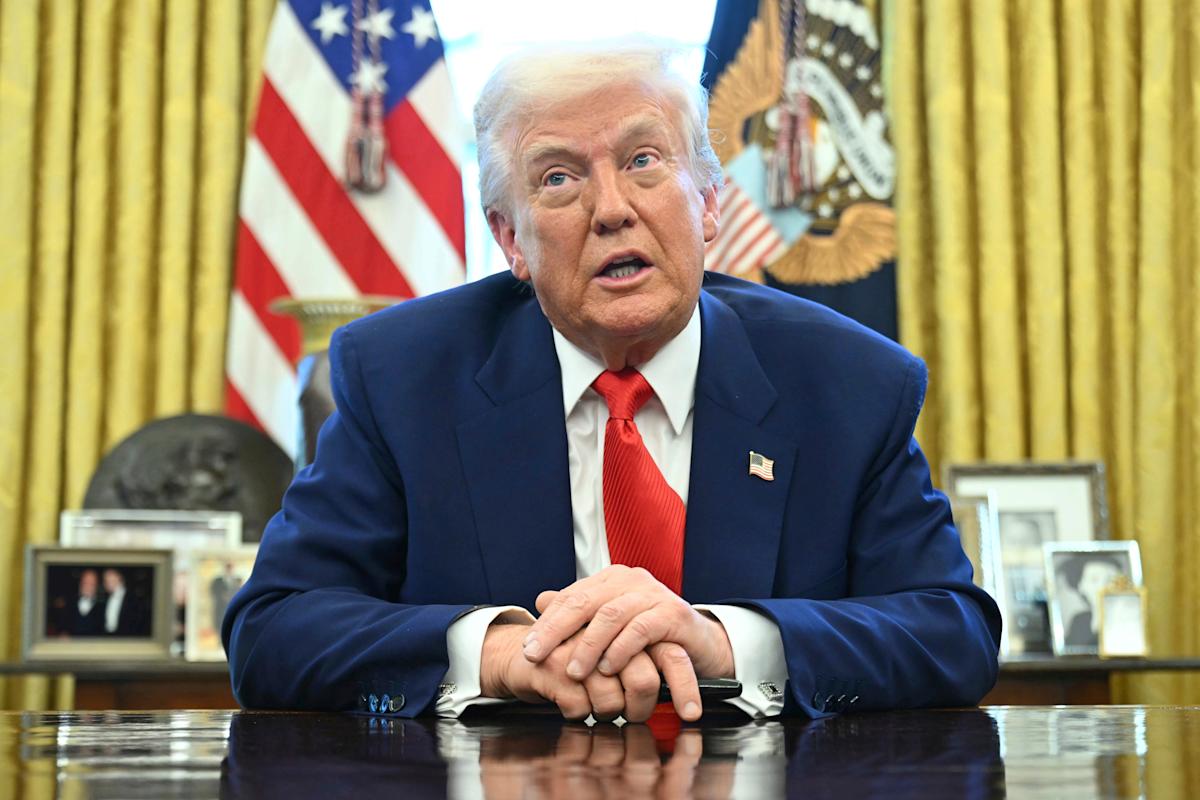U.S. President Donald Trump speaks after signing an executive order in the Oval Office of the White House Wednesday, April 9, 2025, in Washington. (Pool via AP) · The Canadian Press
U.S. President Donald Trump’s trade war with Canada is ultimately about America’s neighbour to the north giving up some of its sovereignty to the United States, according to a trade expert from accounting and consulting giant Pricewaterhousecoopers (PwC).
The United States has imposed levies on Canadian steel, aluminum, copper, and certain automotive products. Last week, Trump hit Canada with a 35 per cent tariff on all goods not covered by the Canada-U.S.-Mexico Agreement (CUSMA), which he signed during his first presidency in 2018. That’s up from 25 per cent last month. Canada’s central bank estimates 95 per cent of non-energy exports are compliant with CUSMA, which is due for renegotiation next year.
On Sunday, Dominic LeBlanc, Canada’s minister responsible for Canada-U.S. trade, said Prime Minister Mark Carney and Trump are set to speak in the coming days.
Michael Dobner, PwC’s Canadian national leader of economics and policy practice, warns Trump’s now well-worn claim that Canada should become “the 51st state” is far more than negotiation table bluster.
“There is no real trade issue,” he told Yahoo Finance Canada on Tuesday. “It’s clear [Trump] is not willing to do a deal with Canada, and I think the reason for that is his aspirations regarding Canada are not the same as the EU and Japan.”
We haven’t really had a lot of luck with Canada. I think Canada could be one where they’ll just pay tariffs. It’s not really a negotiation.U.S. President Donald Trump speaking to reporters at the White House on July 25
According to Yale University’s Budget Lab, “Canada has borne the brunt of the damage from U.S. tariffs so far,” with its long-run economy 2.1 per cent smaller since the start of 2025, by its analysis.
Statistics Canada’s June trade figures show Canadian exporters did more business with the United States last month, even as tariffs increased. The federal agency says Canada’s trade surplus with the U.S. grew to $3.9 billion in June, from $3.5 billion in May. In June of 2024, that figure was $8.4 billion.
RBC assistant chief economist Nathan Janzen expects plunging export volumes to “substantially subtract” from Canada’s gross domestic product growth when second-quarter figures are released later in August.
Meanwhile, Trump has repeatedly offered to convert Canada from a sovereign nation to “the 51st state” during his second term as U.S. president. The move would enhance America’s access to critical minerals largely controlled by China, and pave the way for U.S. access to new ocean shipping lanes in Canada’s Arctic being created by melting sea ice.
Story Continues
Dobner sees this as the crux of Trump’s vision for future U.S.-Canada relations. He says this includes “full alignment” on issues involving the economy and defence.
“We will stay Canada. You can look at the EU as a potential model here,” Dobner said. “That means that Canada would, in this kind of arrangement, lose some of its independence in one way or another.”
“That’s the big issue, not trade,” he added.
With the clock ticking down to CUSMA’s expiration, Dobner says PwC’s business clients are scrambling to certify products under the agreement. At the same time, he says prolonged uncertainty between Canada and its largest trading partner has “frozen” capital spending.
Linda Hasenfratz, CEO of Guelph, Ont.-based autoparts manufacturer Linamar (LNR.TO), is on the front lines of the Canada-U.S. trade war. In a recent interview with Yahoo Finance Canada, she said if the U.S. were to apply tariffs to CUSMA-compliant autoparts, it would “bring the industry to its knees,” as many of these items cross the border multiple times before installation in a finished vehicle.
“The Canada-U.S.-Mexico Agreement has thus far been key to Canada’s perceived safety net,” CIBC Capital Markets chief economist Avery Shenfeld wrote in a report last week.
“Canada’s edge tied to the USMCA carve-out is also only as durable as the USMCA itself, and it has to be extended by all parties or it expires in 2026. That cloud of uncertainty will hang over capital spending plans in a broad range of Canadian export sectors.”
“Whether any of this lasts will depend on Trump’s word,” Shenfeld added. “We’ve seen how shaky that foundation can be.”
Dobner ultimately sees two paths for Canada: One, suffer the wrath of the Trump administration without a deal in place in the hopes that his successor will favour free trade, while businesses attempt to diversify their customer base.
“The other option is to get to some kind of economic union that is not a full annexation, so to speak, by the United States,” he said. “Is it possible? Yes, I think it is. It depends how big the hardships that the U.S. administration is willing to put on Canada to push it towards that.”
Jeff Lagerquist is a senior reporter at Yahoo Finance Canada. Follow him on X @jefflagerquist.
Download the Yahoo Finance app, available for Apple and Android.

